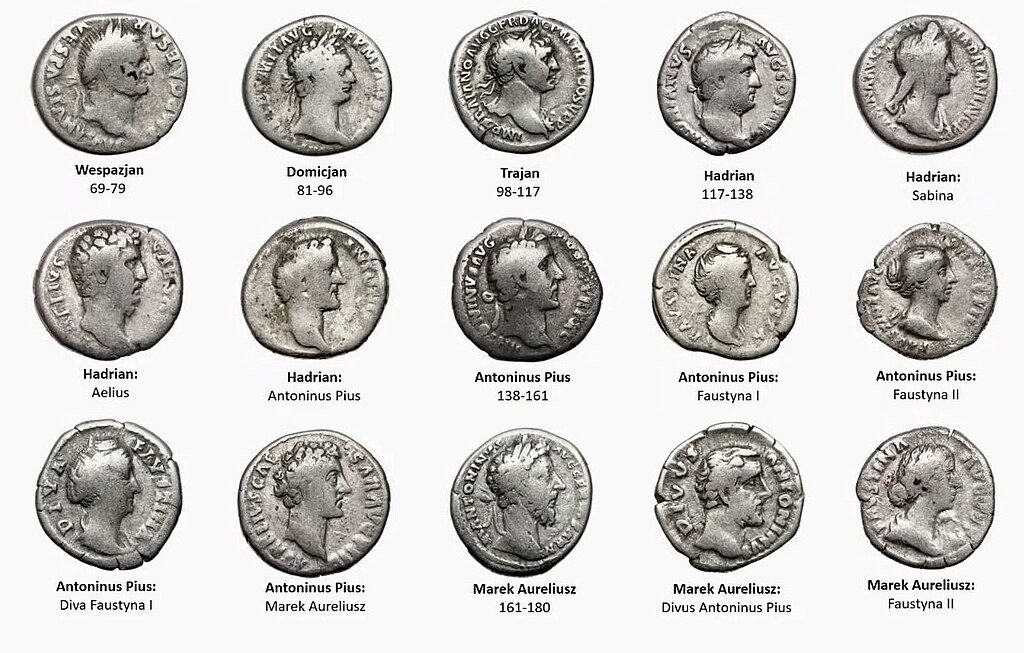Roman Coin Identification Guide: A Collector’s Honest Walkthrough
A while ago, I bought a Roman coin from an old dealer at a flea market. I didn’t know what I was doing. The guy handed me a little bronze disk with a bust on one side and a winged figure on the other. No date. No country. Just some Latin that meant nothing to me. But it felt… powerful. That one mysterious coin started everything for me.
Now, after sorting through hundreds of coins and making plenty of mistakes, I want to help you skip the confusion. If you’re staring at a Roman coin and don’t know what it is — this is the guide I wish I had on day one.
👑 1. Start With the Face – Who Is It?
First thing: look at the portrait side (the obverse). You’ll usually see a head — an emperor, empress, or maybe even a deity. Surrounding that head is a bunch of text in Latin.
That’s your first big clue. The inscription usually includes the ruler’s name and titles.
For example:
“IMP CAES NERVA TRAIAN AVG GERM DAC PM TRP COS VI PP”
That’s a fancy way of saying: “This coin was issued by Emperor Trajan.”
You don’t need to memorize the abbreviations. Use tools like WildWinds.com or even NumisDon’s Roman ruler guide. Just match the letters and names.
🛡️ 2. Flip It – What’s Happening on the Reverse?
The reverse (back side) is usually symbolic. You might see gods, soldiers, altars, animals — or personifications like Victory or Roma.
Sometimes it helps to squint and look at the general shape: standing figure, seated figure, winged? Then read what it says.
One common example:
“FEL TEMP REPARATIO” — which means “Restoration of Happy Times.”
This kind of slogan appeared a lot during times of chaos — emperors used coins to say, “Hey, things are getting better.” (Even if they weren’t.)
🧩 3. Mint Marks – Hidden But Useful
A lot of coins from the later Empire have little mint marks — usually at the bottom on the reverse, below the main image. That area is called the exergue.
Example:
SMTS = Sacra Moneta Thessalonica.
That tells you the coin was minted in Thessalonica. These marks can look confusing at first, but they’re really useful once you know the system. You can use NumisDon’s mint mark guide to decode them quickly.
🪙 4. What’s It Made Of?
Metal matters. It helps narrow things down fast.
-
Gold (Aureus or Solidus): High value, usually well-struck.
-
Silver (Denarius, Antoninianus): Used widely during the early Empire.
-
Bronze (Sestertius, As, Dupondius, Follis): Common, and often large.
If it’s lightweight and dark brown or green, it’s likely bronze. If it shines silver but looks thin, it could be a silver-washed coin — that’s a late Roman trick when silver was getting scarce.
🗓️ 5. Dating the Coin Without a Date
Roman coins didn’t have AD years on them, but they included titles that help date them.
Things like:
-
TR P (Tribunicia Potestas) — means the number of years the emperor held tribunician power.
-
COS (Consul) — same idea, it increases over time.
Historians have tracked when these titles were held, so if you know the ruler and the title numbers, you can usually date the coin within a few years. It’s like solving a little puzzle.
💸 6. Figuring Out Value
This is the question everyone asks first — “Is it worth anything?”
Truth is, value depends on a mix of things:
-
Who’s on it: Some emperors are rare (like Otho, who ruled for just a few months)
-
Condition: A clear, centered coin is always worth more
-
Metal: Gold and silver obviously go for higher prices
-
Historical interest: A coin showing Colosseum or army scenes tends to draw more attention
Want to check real values? Look at auction sites like CNG or acsearch.info. NumisDon also has a Roman Coin Value page that breaks down examples.
🧠 Example: Let’s Identify One Together
Here’s what a real coin might say:
Obverse: IMP GORDIANVS PIVS FEL AVG
Reverse: LAETITIA AVG
Metal: Silver
Mint: Rome
This is a denarius of Emperor Gordian III (ruled AD 238–244), showing the goddess Laetitia on the back. It’s a fairly common type, but in great condition, it still has decent value.
🛠 Tools I Personally Use
When I get stuck (and I still do), here’s what I use:
-
WildWinds.com — for matching inscriptions
-
ACSearch.info — to compare with auction results
-
ForumAncientCoins.com — friendly community for ID help
-
NumisDon — especially their guides for emperors, mint marks, and beginner tips
🧾 Final Thoughts
The first time you hold a Roman coin, it might feel like just an old object. But once you start decoding the inscriptions and recognizing the faces, it becomes something more — a connection to someone who lived, ruled, and shaped history.
Identifying Roman coins isn’t hard. It just takes patience, curiosity, and a few good resources.
Want to make it easier on yourself?
👉 Download our free printable Roman Coin Identifier Chart (PDF) — perfect to keep by your desk or take to markets.
Good luck out there. And remember — every ancient coin has a story. Your job is just to uncover it.
